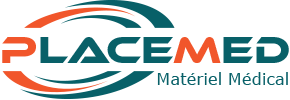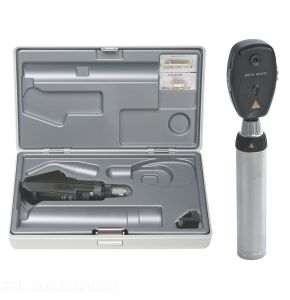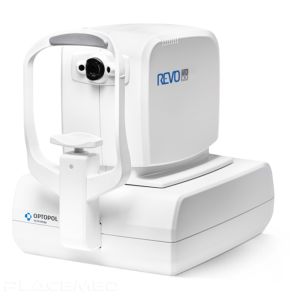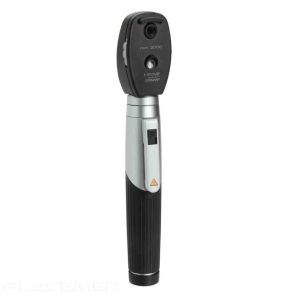Ophtalmoscope
Ophtalmoscope HEINE Beta 200 Skiascope - Trousse BETA 3,5V
Tarif sur demande18/11/2024 531
Ophtalmoscope de table - Optopol REVO NX 130
Tarif sur demande18/11/2024 565
Ophtalmoscope HEINE mini 3000 LED
Tarif sur demande18/11/2024 699
Un ophtalmoscope pro pour une vision saine!
Ce stand est dédié à un outil incontournable qui améliore la pratique médicale et contribue à la santé visuelle des patients. Dans ce stand, nous vous proposons une large gamme d'ophtalmoscopes de haute qualité. Ces instruments sont indispensables pour l'examen des yeux et la détection précoce des maladies oculaires. Ils offrent au praticien des images précises et nettes du fond d'œil.
Qu'est-ce qu'un ophtalmoscope ?
C'est un un outil médical important qui est utilisé pour observer l'intérieur de l'œil. Il permet de voir la rétine, le disque optique, les vaisseaux sanguins et la choroïde. Les médecins spécialisés en soins des yeux, comme les ophtalmologistes et les optométristes, utilisent cet instrument pour diagnostiquer et suivre différentes maladies oculaires.
Il existe plusieurs types, tels que les modèles directs et indirects, ainsi que ceux équipés de balayage laser. Chaque type a ses propres avantages et utilisations. Comprendre le fonctionnement de cet outil aide les professionnels de la santé à mieux protéger la vue de leurs patients.
Quelle est l'histoire de ophtalmoscope ?
L'invention de cet appareil a changé notre façon d'étudier l'œil humain. Il a été créé au 19ème siècle par Hermann von Helmholtz, un physicien allemand, en 1851. Le premier modèle utilisait un miroir et une source de lumière pour éclairer l'intérieur de l'œil.
Au fil des années, l'appareil a été amélioré. Les sources de lumière sont passées des bougies aux lampes électriques, ce qui a rendu l'examen plus clair. Les lentilles ont aussi été perfectionnées pour agrandir mieux l'image.
Dans les années 1940, une version indirecte a été introduite. Ce modèle utilise une lentille spéciale qui permet de voir une plus grande partie de l'intérieur de l'œil. Il est maintenant couramment utilisé pour les examens de dépistage.
Plus récemment, des technologies modernes comme le balayage laser et l'imagerie numérique ont été ajoutées. Ces innovations permettent de visualiser l'œil en trois dimensions et de prendre des images très détaillées.
Aujourd'hui, cet appareil reste essentiel en ophtalmologie. Il aide les médecins à diagnostiquer et traiter de nombreuses maladies des yeux. Avec les avancées technologiques, il continue de s'améliorer pour mieux protéger la santé visuelle des patients.
Quel est le rôle de l'ophtalmoscopie dans l'examen oculaire ?
L'ophtalmoscopie est une technique qui permet aux professionnels de la santé de voir l'intérieur de l'œil, en particulier la rétine, le nerf optique et les vaisseaux sanguins. En utilisant un ophtalmoscope, le médecin peut détecter des signes précoces de maladies oculaires. Cet examen est crucial pour évaluer la santé de l'œil et prévenir des complications potentielles.
Grâce à l'ophtalmoscopie, les médecins peuvent observer directement des anomalies qui pourraient passer inaperçues autrement. C'est un outil simple mais puissant pour surveiller la santé visuelle et assurer un suivi approprié des patients.
Pourquoi est-il important de détecter tôt les maladies oculaires ?
La détection précoce des maladies oculaires est essentielle pour prévenir la perte de vision. De nombreuses affections, comme le glaucome ou la dégénérescence maculaire, peuvent progresser silencieusement sans symptômes évidents. En les identifiant tôt, il est possible de commencer un traitement qui ralentit ou arrête la progression de la maladie.
De plus, certaines maladies générales, comme le diabète ou l'hypertension, peuvent affecter les yeux. L'ophtalmoscopie peut révéler des signes de ces conditions, permettant une prise en charge globale du patient.
Quels sont les différents types d'ophtalmoscopes ?
Ophtalmoscopes directs
L'ophtalmoscope direct est le type le plus courant. Il est compact et facile à utiliser. Il permet une vision droite et agrandie de la rétine. Cet instrument est idéal pour un examen rapide en cabinet médical.
Ophtalmoscopes indirects
L'ophtalmoscope indirect offre une vue plus large de la rétine. Il utilise une lumière plus intense et une lentille spéciale tenue devant l'œil du patient. Ce type d'ophtalmoscope est particulièrement utile pour examiner la périphérie de la rétine et détecter des déchirures ou des détachements.
Monoculaires et binoculaires
Les ophtalmoscopes peuvent être monoculaires ou binoculaires :
- Monoculaire : L'examen se fait avec un seul œil, comme avec un ophtalmoscope direct. C'est simple et pratique pour un usage quotidien.
- Binoculaire : L'examen se fait avec les deux yeux, offrant une perception de la profondeur. Cela est utile pour évaluer la structure en trois dimensions de l'œil.
Avantages et utilisations spécifiques
Il existe plusieurs types d'ophtalmoscopes, chacun ayant ses propres caractéristiques distinctes :
- Direct : Facile à transporter, idéal pour les examens de routine.
- Indirect : Offre une vue plus large, essentiel pour détecter les anomalies périphériques.
- Monoculaire : Simplicité d'utilisation, adapté aux médecins généralistes.
- Binoculaire : Meilleure perception de la profondeur, préféré par les ophtalmologistes.
Comment réaliser une ophtalmoscopie efficace ?
Méthodologie de l'examen
Pour une ophtalmoscopie réussie, suivez ces étapes :
- Assurez-vous que la pièce est faiblement éclairée pour dilater les pupilles.
- Expliquez le processus au patient pour le mettre à l'aise.
- Positionnez-vous à environ 15 cm du patient et légèrement de côté.
- Demandez au patient de regarder un point fixe au loin.
- Utilisez l'ophtalmoscope pour examiner la rétine, le nerf optique et les vaisseaux sanguins.
Une bonne technique permet d'obtenir des images claires et de détecter les anomalies.
Interprétation des observations
L'interprétation correcte des observations est essentielle :
- Rétine : Recherchez des signes de décollement, de saignement ou de dépôts anormaux.
- Nerf optique : Vérifiez la couleur, la forme et la netteté des bords pour détecter des anomalies comme le glaucome.
- Vaisseaux sanguins : Observez les artères et les veines pour repérer des signes d'hypertension ou de diabète.
Une formation adéquate est nécessaire pour interpréter correctement les signes observés.
Quelles sont les innovations technologiques en ophtalmoscopie ?
Ophtalmoscopes numériques avec capture d'image
Les ophtalmoscopes numériques permettent de capturer des images de l'œil en temps réel. Ces images peuvent être :
- Stockées pour un suivi à long terme du patient.
- Partagées avec d'autres professionnels pour une consultation.
- Utilisées pour expliquer les conditions au patient.
Cette technologie améliore la précision du diagnostic et facilite la communication.
Intégration avec des systèmes d'imagerie avancés (OCT)
L'OCT (Tomographie par Cohérence Optique) est une technique d'imagerie avancée qui fournit des images détaillées des couches de la rétine. L'intégration de l'ophtalmoscope avec l'OCT offre :
- Une analyse plus approfondie des structures oculaires.
- La détection précoce de maladies comme la dégénérescence maculaire.
- Un suivi précis de l'évolution des maladies oculaires.
Cette combinaison de technologies renforce la capacité diagnostique des professionnels de la santé.
Quelles sont les applications cliniques de l'ophtalmoscope ?
Diagnostic des rétinopathies
La rétinopathie est une maladie de la rétine qui peut entraîner une perte de vision. L'ophtalmoscopie permet de détecter :
- Des saignements ou des exsudats.
- Des modifications des vaisseaux sanguins.
- Des zones de la rétine endommagées.
Un diagnostic précoce permet de mettre en place un traitement pour prévenir la progression de la maladie.
Détection du glaucome
Le glaucome est une maladie qui endommage le nerf optique, souvent liée à une pression intraoculaire élevée. L'ophtalmoscopie aide à :
- Observer l'état du nerf optique.
- Détecter des signes d'atrophie ou de creusement.
- Surveiller l'évolution de la maladie avec le temps.
Un suivi régulier est essentiel pour prévenir la perte de vision liée au glaucome.
Dégénérescence maculaire liée à l'âge (DMLA)
La DMLA affecte la macula, la zone centrale de la rétine responsable de la vision fine. L'ophtalmoscopie permet de :
- Détecter des dépôts appelés drusen.
- Observer des changements dans la pigmentation.
- Identifier les néovaisseaux dans la forme humide de la DMLA.
Une détection précoce permet d'instaurer des traitements pour ralentir la progression de la maladie.
Suivi des patients diabétiques ou hypertendus
Le diabète et l'hypertension peuvent affecter les vaisseaux sanguins de la rétine. L'ophtalmoscopie est essentielle pour :
- Détecter des signes de rétinopathie diabétique.
- Observer des hémorragies ou des microanévrismes.
- Surveiller l'efficacité des traitements.
Un suivi régulier aide à prévenir les complications graves et à préserver la vision.
Comment entretenir votre ophtalmoscope ?
Maintenir votre ophtalmoscope en bon état nécessite un entretien fréquent
- Nettoyage : Essuyez les surfaces avec un chiffon doux après chaque utilisation.
- Désinfection : Utilisez des solutions appropriées pour éviter la contamination croisée.
- Vérification des piles : Remplacez-les régulièrement pour assurer un éclairage optimal.
- Stockage : Gardez l'appareil dans son étui pour le protéger de la poussière et des chocs.
Un ophtalmoscope bien entretenu garantit des performances fiables à chaque examen.
L'ophtalmoscope est un outil indispensable pour tout professionnel de la santé impliqué dans les soins oculaires. Il permet de détecter précocement les maladies oculaires, de surveiller l'évolution des conditions chroniques et d'assurer une prise en charge appropriée de vos patients.
Chez Placemed, nous comprenons l'importance de disposer d'équipements de qualité. Notre sélection d'ophtalmoscopes répond aux exigences les plus élevées en matière de précision et de fiabilité. En équipant votre cabinet avec nos produits, vous offrez à vos patients les meilleurs soins possibles.
 English
English 


